Athlete’s Foot Treatment: 12 Effective Home Remedies That Work
Potent at-home remedies to help you manage and eliminate this fungal overgrowth.
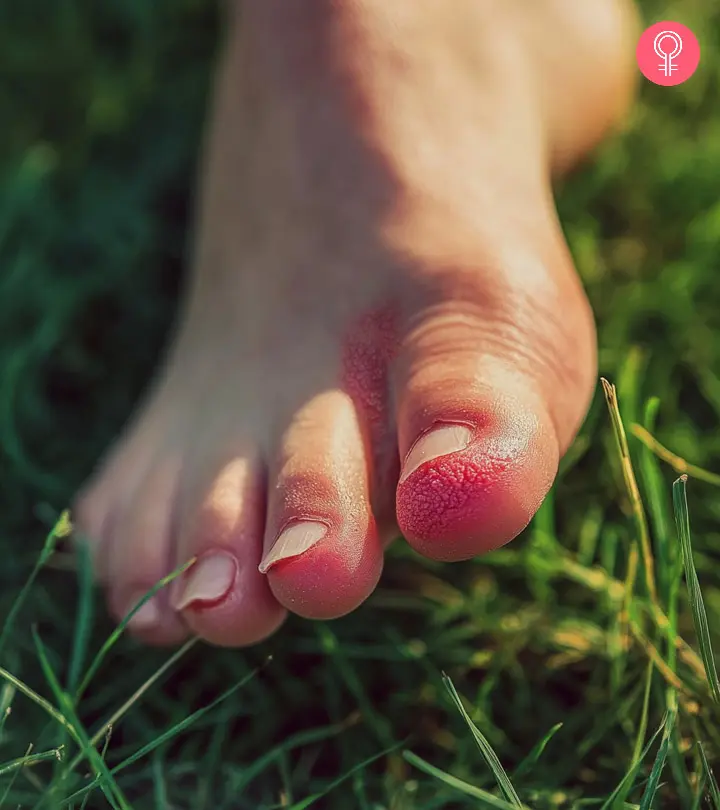
Image: Midjourney/ StyleCraze Design Team
Athlete’s foot is a fungal infection commonly seen in athletes and people who engage in regular physical activity. The condition is extremely contagious and spreads quickly in shared spaces like swimming pools and locker rooms. You are at an increased risk of developing athlete’s foot if you wear sweaty socks and don’t air your feet out. While an athlete’s foot is a serious health condition that requires medical attention, a few natural remedies can alleviate the symptoms quickly. This article provides all the information you need to know about athlete’s foot and a few natural treatments you can try at home!
In This Article
What Is Athlete’s Foot?
Athlete’s foot is a fungal infection that affects the skin on the feet. It is contagious and is medically known as tinea pedis. This fungal infection can also spread to the toenails and the hands.
According to a study, out of 35.5 million patients in 2018 in the USA approximately 666 235 had some type of fungal infections. Around 76.3% of the fungal infections were caused by aspergillus, pneumocystis, and candida. Athlete’s foot or tinea pedis is also caused by a type of candida fungus.
This infection is termed as athlete’s foot because it is mostly seen in athletes. It is often accompanied by the following symptoms.
Key Takeaways
- Itchy blisters and cracking skin between the toenails are some symptoms of athlete’s foot.
- Going barefoot in swimming pools and having sweaty feet can cause athlete’s foot.
- Applying coconut oil, ginger, baking soda, or hydrogen peroxide may help manage it.
- Washing feet frequently, applying anti-fungal powder, and wearing breathable and clean socks help prevent athlete’s foot.
Symptoms Of Athlete’s Foot
- An itchy, burning, and stinging sensation between the toes
- Itching or burning sensation on the soles of your feet
- Itchy blisters on the feet
- Cracking and peeling skin between the toes and on the soles of your feet
- Dry skin on the soles and/or sides of the feet
- The skin on your feet becomes raw
- Discolored, thick, and crumbly toenails
- Toenails that pull away from your nail bed

Let us now look at the main causes and risk factors for athlete’s foot.
Causes Of And Risk Factors For Athlete’s Foot
The main cause of athlete’s foot is a fungal infection caused by the growth of tinea fungus on your feet. You can contract it on direct contact with an infected individual or object. Since this foot fungus thrives in moist and warm environments, it can be commonly found in showers, locker room floors, and around swimming pools.
Although everyone is susceptible to developing athlete’s foot, some people are at an increased risk. Factors that could be held responsible for increasing your risk of developing athlete’s foot are:
- Going barefoot to public places like swimming pools and showers
- Sharing utensils with an infected person
- Wearing tight-fitting shoes
- Keeping your feet soaked and covered for long periods
- Having sweaty feet
- Minor skin or nail injury on your foot
A YouTuber talks about her experience of suffering with the athlete’s foot and how she got rid of it. She shared that she got it due to roaming bare feet and suggests always wearing socks or flip-flops to prevent it. She states, “I was working at a factory full time and it was honestly so hot wearing boots for eight hours and this is how I got an athlete’s foot I think (i).”
Athlete’s foot can be classified into different types depending on the kind of infection and the area of the foot affected. The three main types of athlete’s foot are discussed below.
Types Of Athlete’s Foot
- Interdigital: This type of infection is also known as toe web infection. It usually occurs between the smallest of your toes and might even spread to the soles.
- Moccasin: This can result in dry and peeling skin on your foot. It may affect the entire sole and can even spread to the sides of your foot.
- Vesicular: This is the least common kind of athlete’s foot. It is usually categorized by a sudden outbreak of fluid-filled blisters under the skin. These blisters usually develop under your feet, but in some cases, they can also appear between your toes, on the heels, or on your feet.
Nobody wants to experience the constant itchiness and pain that usually accompany this condition.
And given that it takes its own sweet time to heal, you need to take some immediate measures to address the issue. The following home cures can help in treating athlete’s foot and speeding your recovery to a great extent.
Home Remedies To Treat Athlete’s Foot
- Apple Cider Vinegar
- Essential Oils
- Baking Soda
- Coconut Oil
- Garlic
- Ginger
- Grapefruit Seed Extract
- Jojoba Oil
- Neem Oil
- Hydrogen Peroxide
- Turmeric
- Epsom Salt
How To Get Rid Of Athlete’s Foot Naturally
1. Apple Cider Vinegar
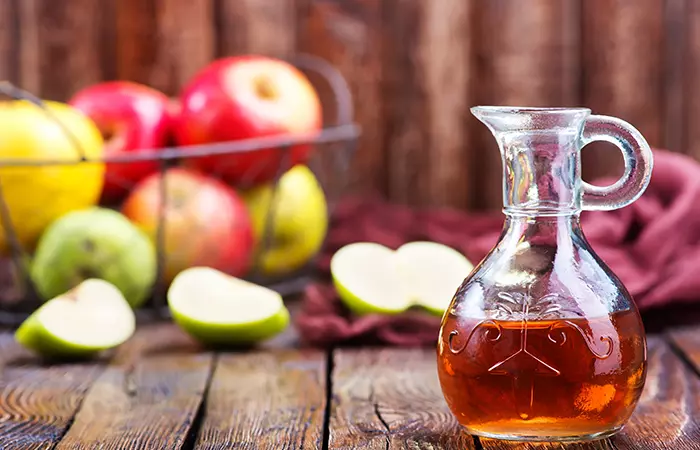
You Will Need
- 1/2 cup of apple cider vinegar
- 2 cups of warm water
What You Have To Do
- Take two cups of warm water in a bowl and add half a cup of apple cider vinegar to it.
- Soak your feet in this solution for 10 to 15 minutes.
- Pat your feet dry.
How Often You Should Do This
You must do this twice daily for best results.
Why This Works
Apple cider vinegar, with its anti-inflammatory properties, can prove to be quite useful in reducing inflammation and pain. It also helps in destroying the fungal infection responsible for causing athlete’s foot with its antifungal properties (1).
2. Essential Oils
a. Lavender Oil
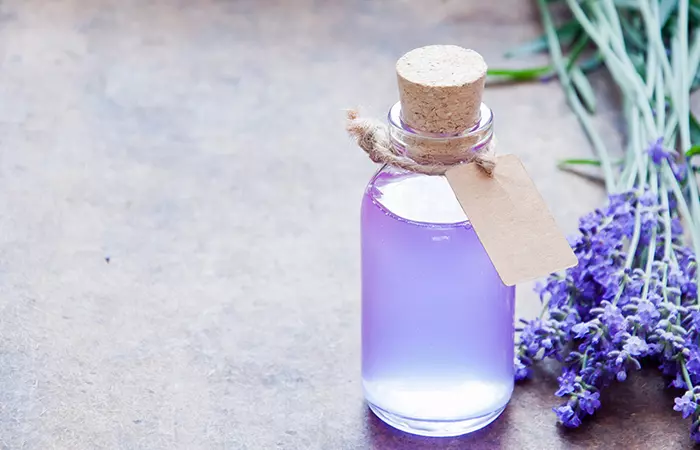
You Will Need
- 12 drops of lavender oil
- 30 mL of any carrier oil (coconut or almond oil)
- Water (optional)
What You Have To Do
- Add 12 drops of lavender oil to 30 mL of any carrier oil.
- Apply this mixture directly to the affected area on your foot and allow it to dry.
- Alternatively, you can add the lavender oil mixture to two cups of water and soak your feet in it for 10 to 15 minutes.
How Often You Should Do This
You must do this 2 to 3 times daily.
Why This Works
The antifungal, anti-inflammatory, and analgesic properties of lavender oil help in fighting the fungus that causes athlete’s foot. The study published in Scientifica (Cairo) (2015) explored the antifungal effects of lavender essential oil compared to clotrimazole against Candida albicans (a yeast that may be present in the digestive system and other parts of the body) in lab tests. While clotrimazole was initially more effective, after 48 hours, lavender oil showed similar antifungal activity, especially at certain dilutions. The results suggest that lavender oil may help reduce fungal growth and could be considered a potential natural treatment for candida infections (2),
b. Peppermint Oil
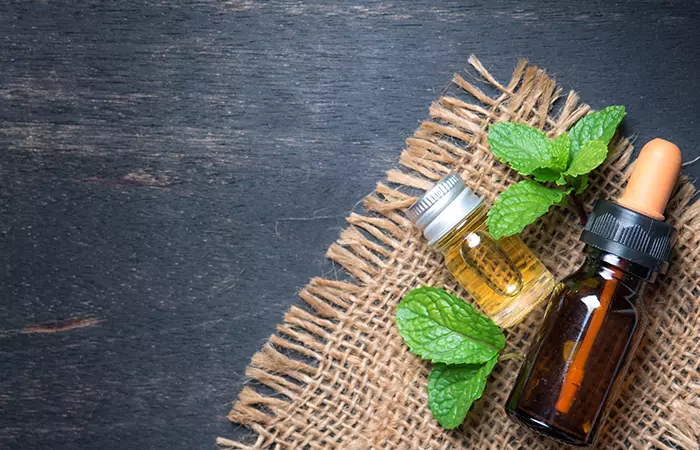
You Will Need
- 12 drops of peppermint oil
- 30 mL of any carrier oil (coconut or almond oil)
- Water (optional)
What You Have To Do
- Mix 12 drops of peppermint oil with 30 mL of any carrier oil.
- Apply this mixture to the affected areas.
- You can also add some warm water to this mixture and use it as a foot soak.
How Often You Should Do This
Do this three times daily.
Why This Works
Peppermint oil contains menthol, which possesses anti-inflammatory and soothing properties that help reduce pain and inflammation (3). It also has antifungal properties that eliminate the infection-causing fungi. The study published in Environmental Health and Preventive Medicine (2015) evaluated the antifungal effects of 26 plant-derived essential oils against four skin-infecting fungi. Among these, oils from apricot (Prunus armeniaca), bitter almond (Prunus dulcis var. amara), olive (Olea europaea), and peppermint (Mentha piperita) demonstrated the strongest antifungal activity. When these oils were mixed, especially in a four-oil combination, they demonstrated the most potent anti-dermatophyte effects, with lower minimum inhibitory concentrations than individual oils (4).
c. Tea Tree Oil
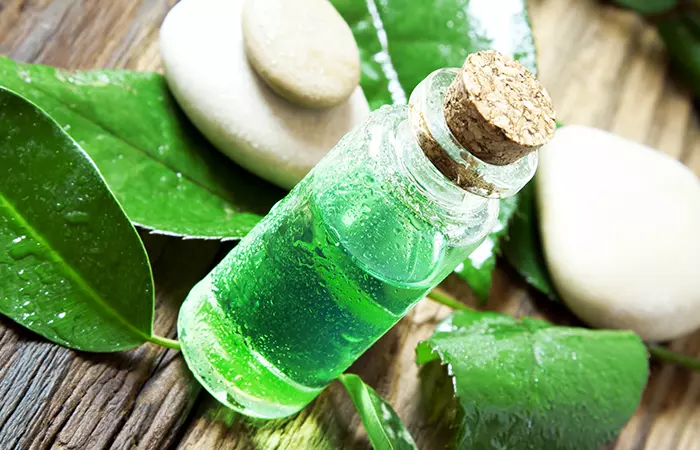
You Will Need
- 12 drops of tea tree oil
- 30 mL of any carrier oil (coconut or almond oil)
- Water (optional)
What You Have To Do
- Add 12 drops of tea tree oil to 30 mL of any carrier oil and mix well.
- Apply this mixture to the affected foot and allow it to dry.
- You can also add some water to this oil mixture and use it as a foot soak.
How Often You Should Do This
You must do this 2 to 3 times daily.
Why This Works
The antimicrobial properties of tea tree oil help in treating many skin conditions, including athlete’s foot. Tea tree oil possesses anti-inflammatory properties that help in reducing inflammation, swelling, and pain. Therefore, using tea tree oil for toenail fungus and Athlete’s foot is an effective solution(5), (6).
Alternatively, oregano oil, chamomile oil, calendula oil, thyme oil, rosemary oil, clove oil, cinnamon oil can also be used for athlete’s foot.
3. Baking Soda
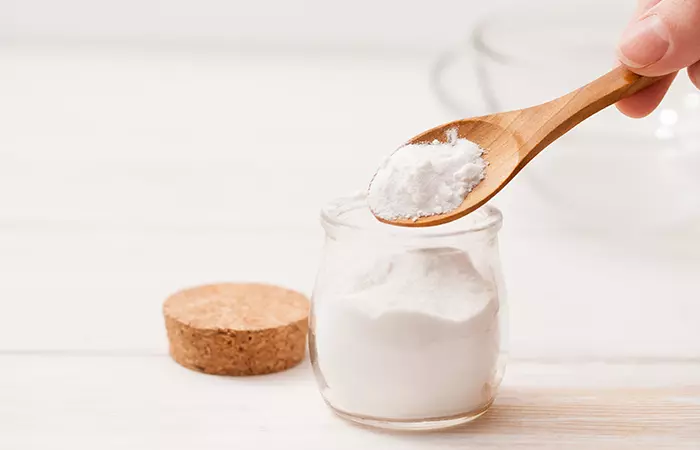
You Will Need
- 1 tablespoon of baking soda
- Water (as required) or lemon juice
What You Have To Do
- Mix a tablespoon of baking soda with a few drops of water to form a thick paste.
- Apply this paste to the affected areas and allow it to dry.
- Rinse thoroughly and pat your skin dry.
How Often You Should Do This
You must do this at least twice daily.
Why This Works
Baking soda is a natural antiseptic that helps prevent the development of secondary infections in the affected foot (7). It also keeps the area moisture-free, which, in turn, makes it uninhabitable for the fungus responsible for causing the infection
4. Coconut Oil
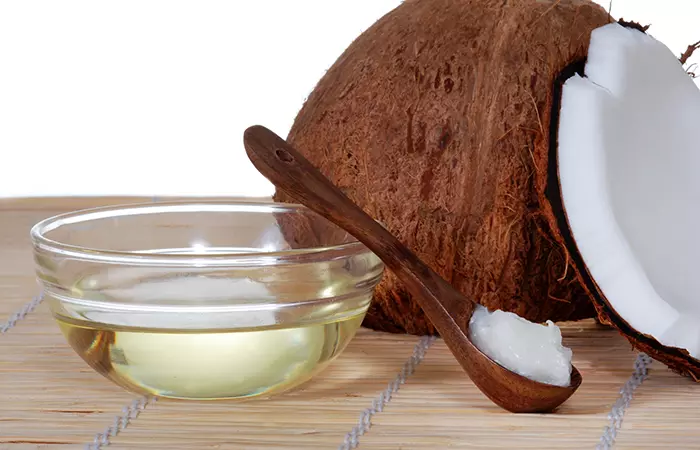
You Will Need
2-3 drops of coconut oil
What You Have To Do
- Apply two to three drops of coconut oil to the affected area.
- You can either allow it to be absorbed by your skin or keep it on for 20 minutes and then wash it off with water.
How Often You Should Do This
You can do this 3 to 4 times daily, at regular intervals.
Why This Works
Coconut oil is another amazing remedy for athlete’s foot. Its antifungal properties destroy the tinea pedis fungus, while its anti-inflammatory and analgesic properties soothe the affected area (8), (9).
5. Garlic
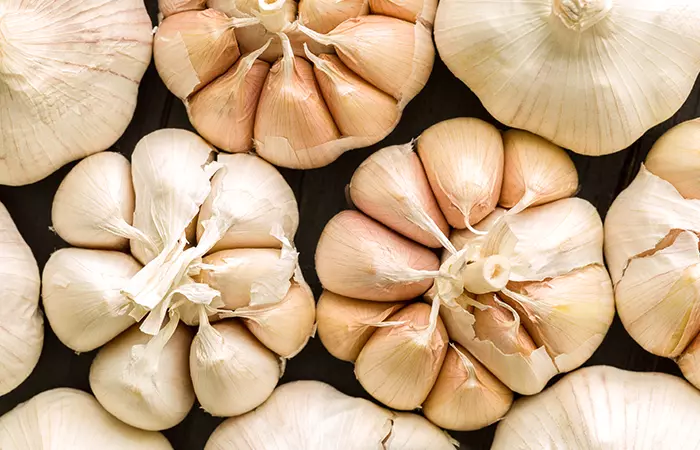
You Will Need
- 2 cloves of peeled garlic
- 2-3 drops of olive oil
What You Have To Do
- Take two cloves of peeled garlic and mince them to form a thick paste.
- Add two to three drops of olive oil to this paste and mix well.
- Apply this paste to the affected areas.
- Leave it on for 20 to 30 minutes, after which you can wash it off with water.
How Often You Should Do This
You must do this 1 to 2 times for a few days until you notice an improvement in your condition.
Why This Works
Garlic contains compounds like ajoene and allicin (red onion also contains allicin), which impart antifungal and anti-inflammatory properties to it (10), (11).
The 2013 review published in the Iranian Journal of Basic Medical Sciences highlights the therapeutic benefits of garlic (Allium sativum) and shallot (Allium hirtifolium), focusing on their organosulfur compounds like allicin, diallyl disulfide, and S-allylcysteine. These natural compounds have shown a wide range of pharmacological effects, including antimicrobial, anti-inflammatory, and antioxidant properties. The study supports the traditional use of these plants in medicine and suggests they are safe, low-toxicity sources of biologically active agents (12). This is why its topical application works wonders in getting rid of athlete’s food and its painful symptoms.
6. Ginger
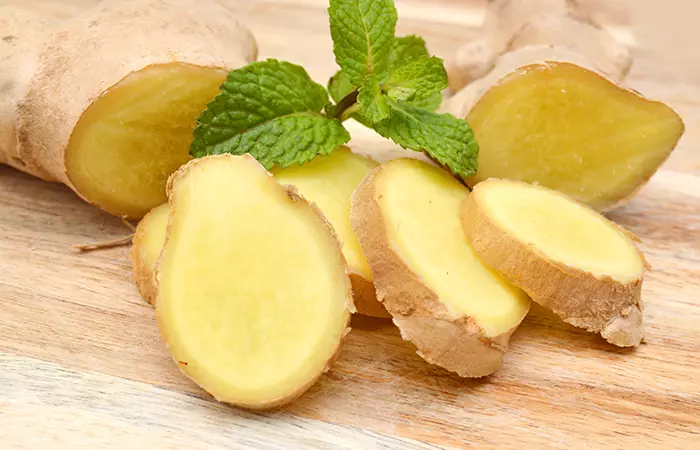
You Will Need
- An inch or two of peeled and cut ginger
- 1 cup of hot water
What You Have To Do
- Add some cut ginger to a cup of water.
- Allow it to boil and simmer for 10 to 20 minutes.
- Strain and let it cool for a while.
- Apply a few drops of this solution to the affected area.
How Often You Should Do This
You must do this 3 to 4 times daily.
Why This Works
Ginger is another herb that can be used to treat athlete’s foot. It exhibits antifungal and anti-inflammatory properties that help to get rid of the inflammation and bad odor associated with the condition (13), (14).
7. Grapefruit Seed Extract

You Will Need
2-3 drops of grapefruit seed extract
What You Have To Do
- Apply two to three drops of grapefruit seed extract evenly to the affected area.
- Leave it on for 10 to 15 minutes and then wash it off with water.
How Often You Should Do This
Do this 2 to 3 times daily.
Why This Works
Grapefruit seed extract possesses excellent antifungal and antimicrobial activities that can help in relieving the symptoms associated with athlete’s foot and fight the underlying infection (15), (16).
8. Jojoba Oil
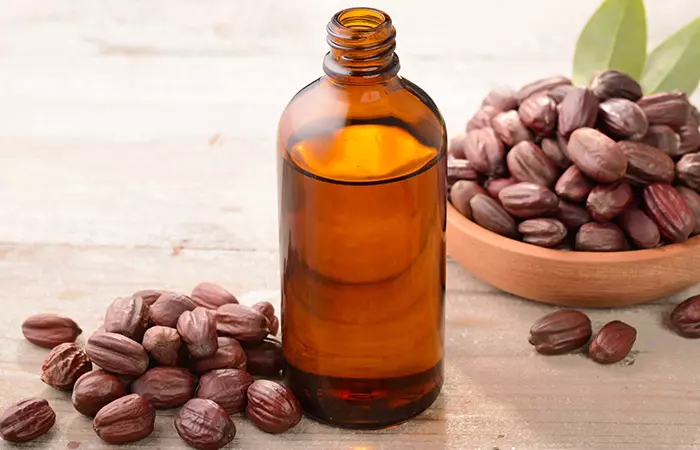
You Will Need
2-3 drops of jojoba oil
What You Have To Do
- Apply a few drops of jojoba oil directly to the affected area.
- Leave it on for 20 to 30 minutes, after which you can wash it off with water.
- You can also leave the oil on your skin to be absorbed.
How Often You Should Do This
You must do this 2 to 3 times daily.
Why This Works
Jojoba oil is widely known for its powerful anti-inflammatory and antifungal properties (17), (18), . These properties fight the fungus responsible for causing the infection and alleviate the symptoms of the infection.
9. Neem Oil

You Will Need
2-3 drops of neem oil
What You Have To Do
- Apply two to three drops of neem oil to the affected area.
- Leave it on for 15 to 20 minutes and then wash it off with water.
How Often You Should Do This
You must do this once daily.
Why This Works
The potent antifungal properties of neem oil help in the treatment of athlete’s foot (19). Also, its anti-inflammatory properties relieve the inflammation that is often associated with the condition (20).
10. Hydrogen Peroxide
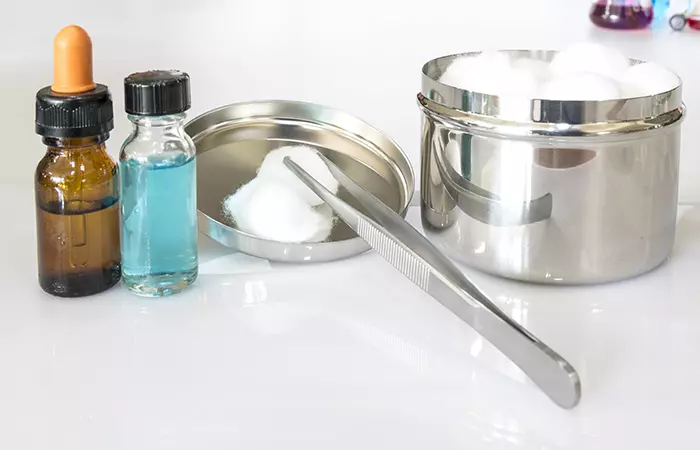
You Will Need
- 1 tablespoon of 3% hydrogen peroxide
- 1 tablespoon of water
- Cotton pads
What You Have To Do
- Mix a tablespoon of 3% hydrogen peroxide with a tablespoon of water.
- Dip a cotton pad in this solution and apply it to the affected areas.
- Allow it to dry naturally.
How Often You Should Do This
You must do this 2 to 3 times daily.
Why This Works
The antiseptic nature of hydrogen peroxide helps in disinfecting the affected area and prevents secondary microbial infections. Hydrogen peroxide also exhibits antifungal properties that fight the underlying fungal infection responsible for causing athlete’s foot (21).
11. Turmeric
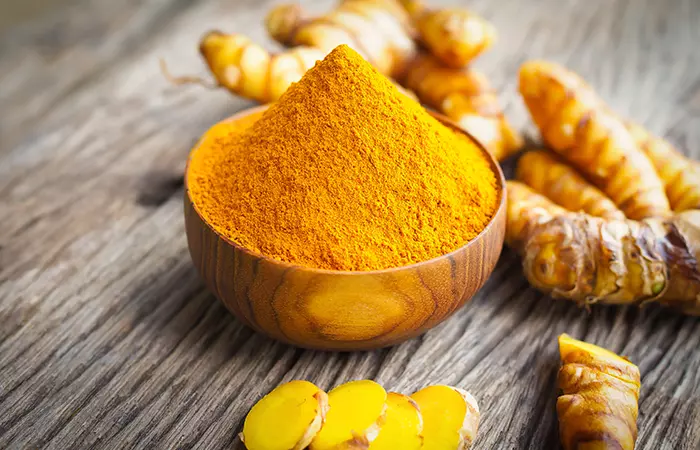
You Will Need
- 1 teaspoon of turmeric powder
- Water (as required)
What You Have To Do
- Take a teaspoon of turmeric powder and add a few drops of water to it to make a paste.
- Apply the paste to the affected foot.
- Leave it on for 15 to 20 minutes and wash it off with water.
How Often You Should Do This
You must do this twice daily.
Why This Works
Turmeric contains a compound called curcumin, which possesses remarkable antifungal, antibacterial, and anti-inflammatory properties that help treat athlete’s foot (22), (23).
12. Epsom Salt
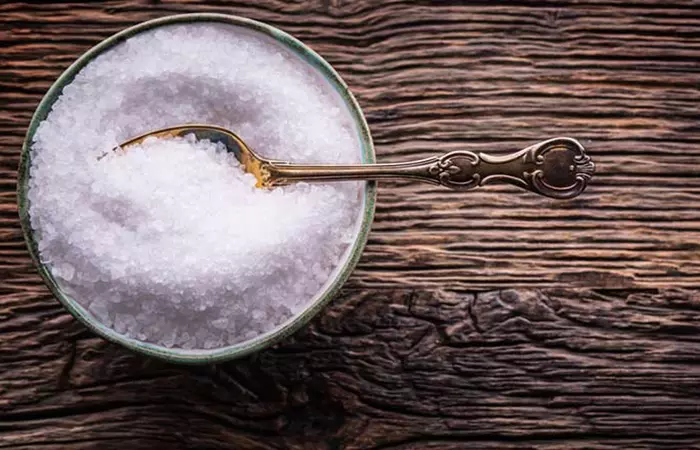
You Will Need
- 1 cup of Epsom salt
- Water
What You Have To Do
- Add a cup of Epsom salt to a large bowl of warm water and allow it to dissolve.
- Soak your feet in the saltwater solution for 10 to 15 minutes.
How Often You Should Do This
Do this 1 to 2 times daily.
Why This Works
An Epsom salt foot soak is an easy and effective remedy to get rid of athlete’s foot. Epsom salt contains magnesium, which possesses anti-inflammatory properties and helps treat the condition (24), (25).
 Quick Tip
Quick TipProbiotics in yogurt, colloidal silver, black tea, and mustard oil also show antifungal activity. Cornstarch, aloe vera, and witch hazel might also possess antifungal properties, however, more research is needed.
Beyond these, you may also need to opt for certain medical treatments. Learn more about them in the following section.
Treatments For Athlete’s Foot
Topical Antifungal Creams And Ointments
- Clotrimazole
This over-the-counter antifungal cream is effective in treating athlete’s foot. It works by inhibiting the growth of the fungus responsible for the infection (26).
- Miconazole
It is available as cream or powder. It is topically applied to the affected areas to stop the growth of the fungus (27).
Oral Antifungal Medications
- Terbinafine
It is typically reserved for severe or stubborn cases of athlete’s foot. The oral form is often taken for several weeks and is especially effective against fungal nail infections (28).
- ItraconazoleIt also is used for severe cases of athlete’s foot. Treatment with Itraconazole usually lasts for a few weeks (29).
Prevention Tips
- Maintain your foot hygiene by washing your feet with soap and water daily (the temperature of the water should be 60ºC or higher to kill the fungus).
- Dry your feet after every wash.
- Apply the antifungal powder prescribed by your doctor on your feet daily.
- Do not share your shoes, socks, and towels with others.
- Wear socks made of breathable fibers like cotton.
- Change your socks daily, especially if your feet tend to get sweaty easily.
- Alternate between two pairs of shoes. This is to give each pair ample time to dry before it is used again.
- Avoid wearing tight or closed shoes for extended periods, especially during warm weather, as this can provide a wet environment that is ideal for the growth of fungi.
- To reduce the chance of reinfection, wash and dry your shoes on a regular basis.
 Quick Tip
Quick TipIf left unattended or untreated for too long, athlete’s foot can also lead to the following complications.
What Happens If You Leave Athlete’s Foot Untreated?
Athlete’s foot can cause mild to severe complications if you leave it untreated for too long. They include:
- An allergic reaction to the tinea fungus, which may cause blistering.
- Development of a secondary bacterial infection, accompanied by swelling and pain in your foot.
- The bacterial infection can also spread to your lymph system and cause infections in your lymph nodes and lymph vessels.
Infographic: Athlete’s Foot: When Should You Seek Medical Attention?
Using over-the-counter remedies and performing self-care at home for a week should result in some improvement. However, if you haven’t observed any progress or the condition worsens, contact your doctor immediately. It is critical to seek treatment as soon as possible before the infection spreads to the rest of your foot or other regions of your body, including your groin or toenails. Check out the infographic below to learn more about seeking medical attention for an athlete’s foot.
Some thing wrong with infographic shortcode. please verify shortcode syntaxAthlete’s foot is a fungal infection that is mainly seen in athletes. Ignoring foot care, like wearing sweaty socks, and engaging in regular physical activity may increase the risk of athlete’s foot. Natural remedies like apple cider vinegar, baking soda, essential oils, Epsom salt, turmeric, neem oil, ginger, coconut oil, and grapefruit seed extract effectively manage athlete’s foot. In addition, garlic and hydrogen peroxide alleviate the symptoms of this condition. Washing your feet with soap and water regularly, drying the feet, and using anti-fungal powders and socks made with breathable fiber reduce the risk of athlete’s foot. If your symptoms are getting worse or if you are still in discomfort, consult a healthcare provider for more effective treatment options.
Frequently Asked Questions
Is athlete’s foot contagious?
Yes, athlete’s foot is highly contagious. Direct contact with infected individuals or objects can cause it to spread.
What kills the fungus on the feet?
There are several home remedies for toenail fungus and Athlete’s foot. You can kill the fungus by washing your feet daily with soap and hot water (60ºC or higher). You can also use topical antifungal medications or any of the above remedies to get rid of the fungus naturally.
How long does it take to get rid of athlete’s foot?
Depending on the course of treatment, it can take anywhere from 1 to 4 weeks to heal completely. You will start noticing a positive change in your condition in a week.
Should I wear socks to bed with athlete’s foot?
You may want to wear socks if you share a bed with someone to reduce the risk of transmitting the fungus to them.
Does rubbing alcohol cure athlete’s foot?
Anecdotal evidence suggests that soaking the affected foot in a solution made of rubbing alcohol and water or applying rubbing alcohol directly to the area can help relieve the symptoms and facilitate healing.
How do you disinfect shoes from athlete’s foot?
You can use a UV shoe sanitizer to disinfect shoes from the fungus that causes athlete’s foot. Other alternatives include washing the shoes in hot water with an antifungal disinfectant and keeping them under direct sunlight to dry properly.
Does baby powder help with athlete’s foot?
There is no evidence to suggest that baby powder can help with athlete’s foot beyond keeping the feet dry for a brief period of time.
Can you get a pedicure if you have athlete’s foot?
You may get a pedicure when you have athlete’s foot, but it is not recommended. It would be best to reschedule till the infection clears up or to let your pedicurist know about your condition so that they can take steps to lower the risk of transmission.
Is it okay to take a bath if you have athlete’s foot?
It is okay to take short baths if you have athlete’s foot, but you should avoid taking a bath if you share a bathroom with someone else so that the fungus does not spread. Also, you need to clean and dry your feet properly after bathing.
Illustration: Home Remedies For Athlete&039s Foot And Prevention Tips
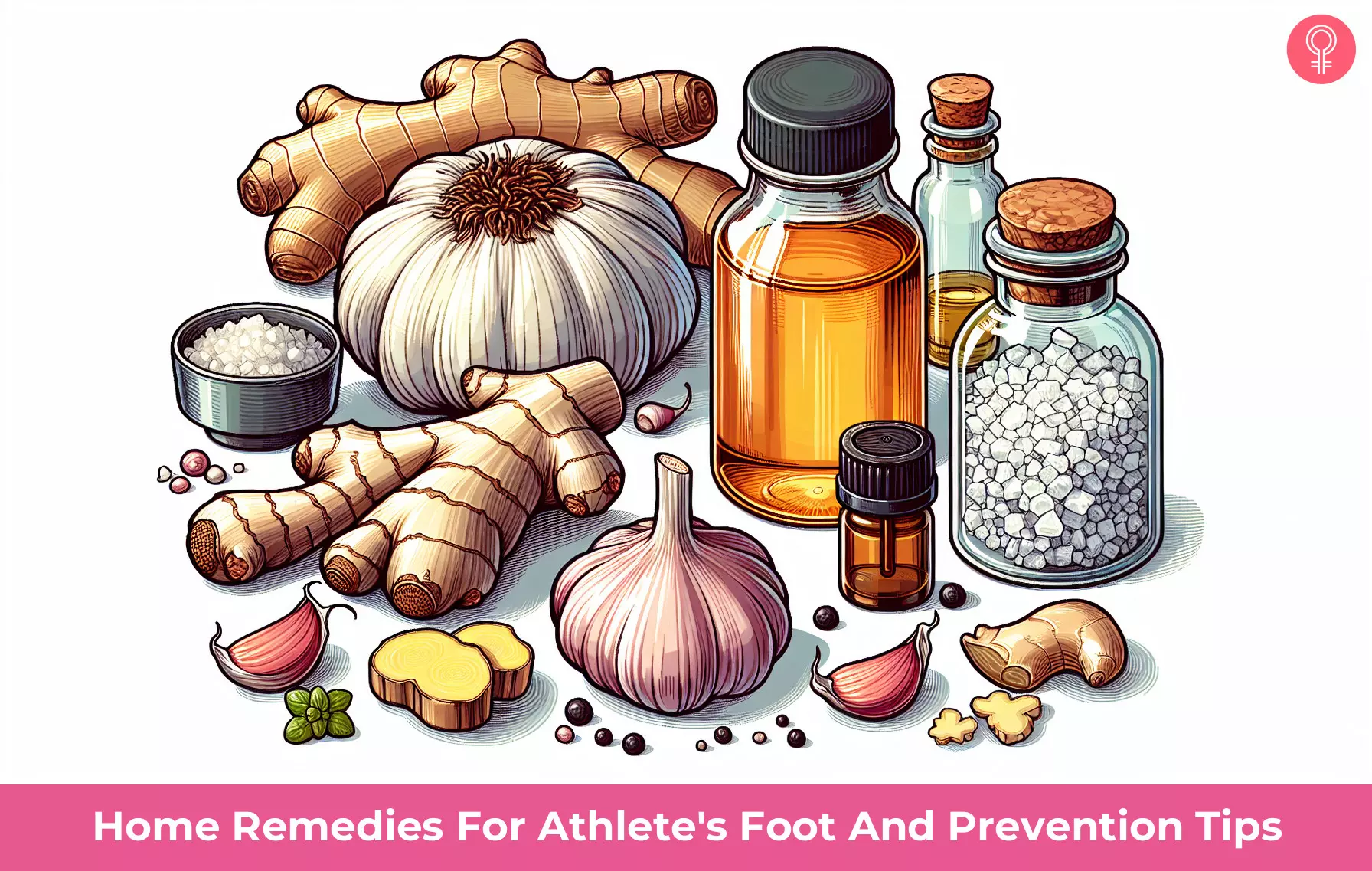
Image: Dall·E/StyleCraze Design Team
Learn how to treat athlete’s foot with simple home remedies! Get rid of the itch and discomfort with easy steps provided in the following video.
Personal Experience: Source
StyleCraze's articles are interwoven with authentic personal narratives that provide depth and resonance to our content. Below are the sources of the personal accounts referenced in this article.
i. Athlete’s Foot Prevention, Treatment & My Experience!https://www.youtube.com/watch?v=x5RK0go4aLw
Read full bio of Caroline Duncan
Read full bio of Shaheen Naser
Read full bio of Ramona Sinha
Read full bio of Monomita Chakraborty






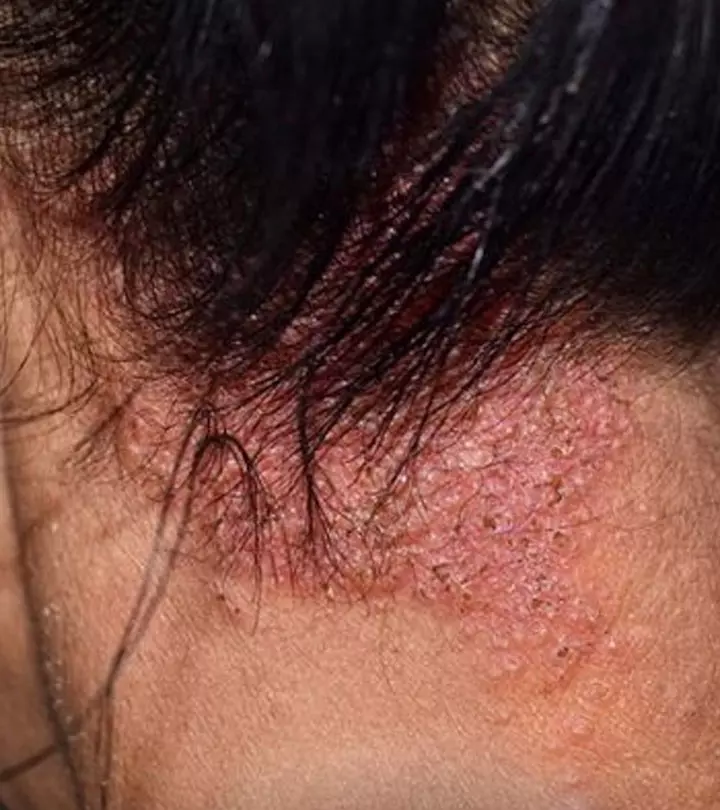

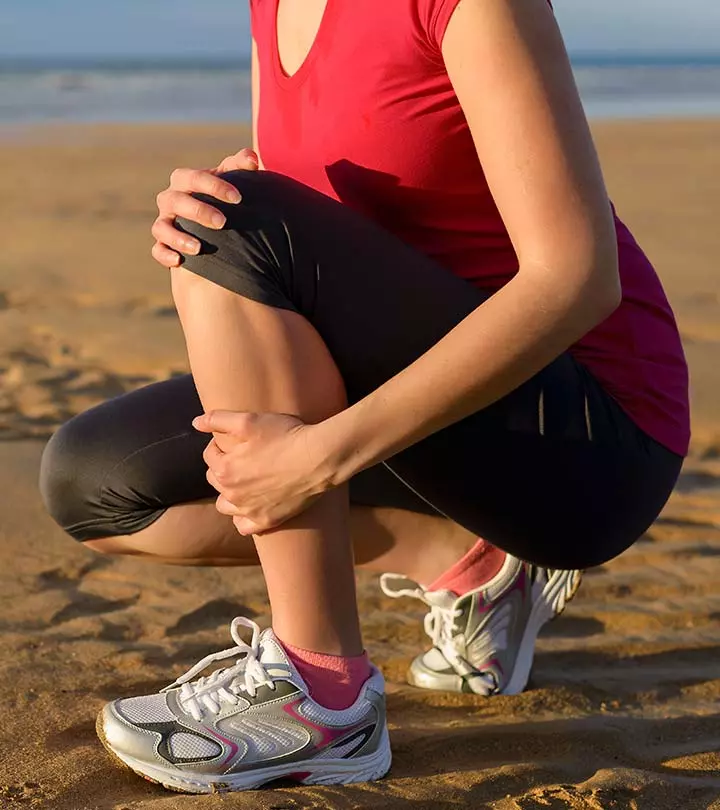
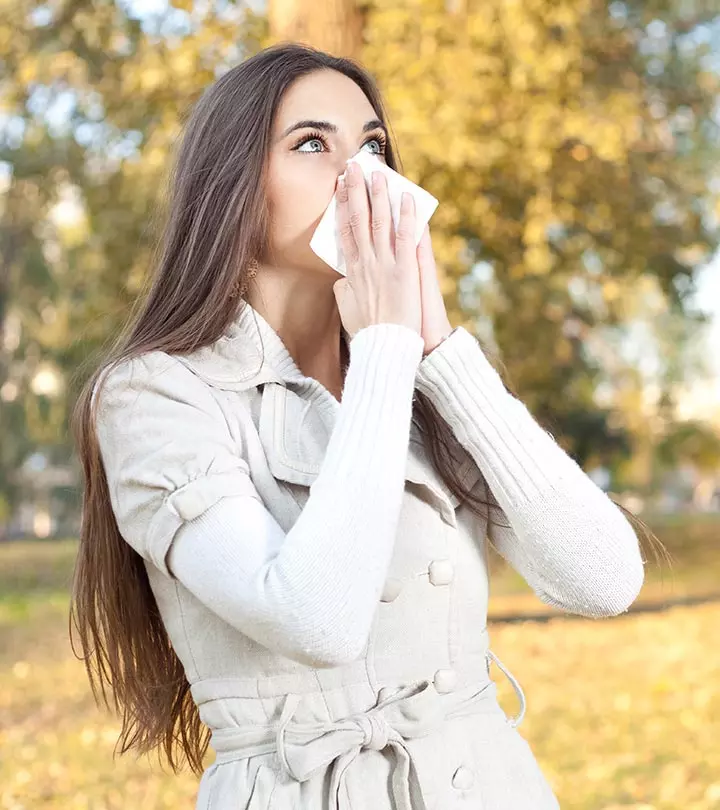

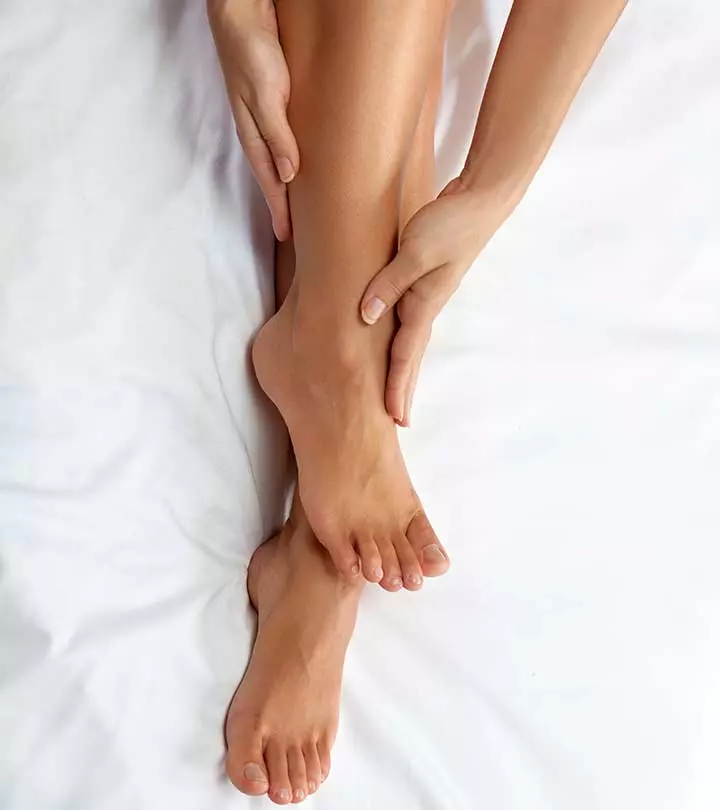
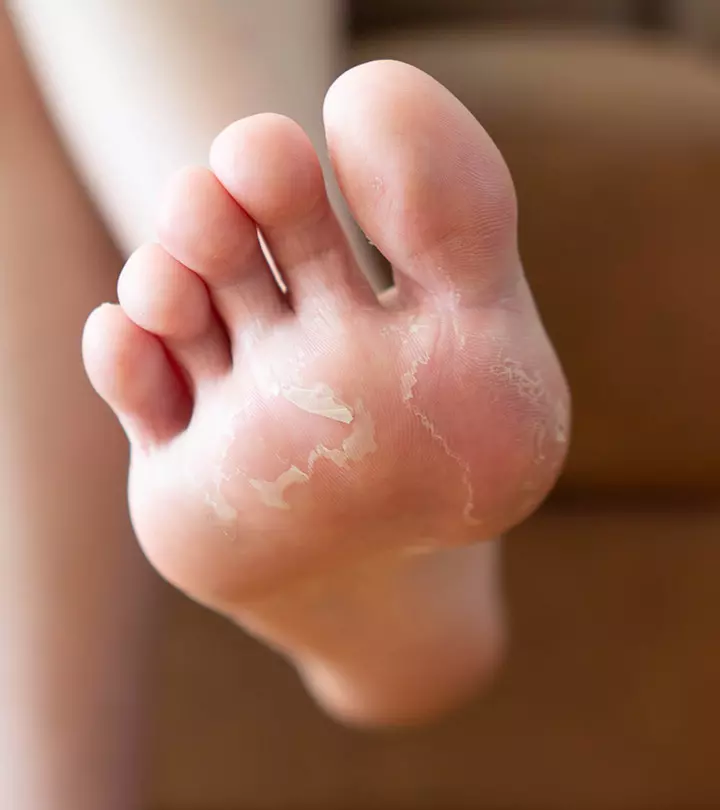
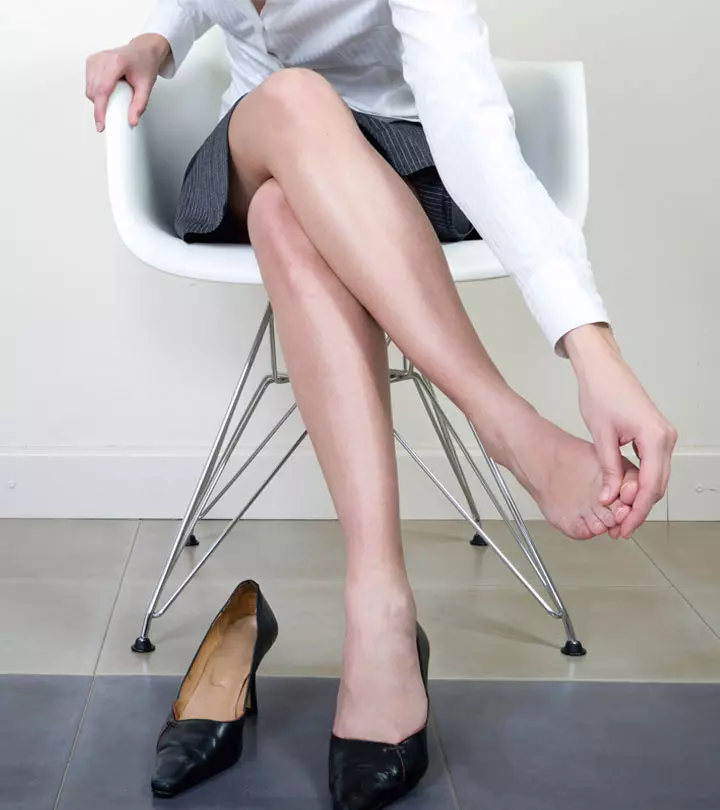
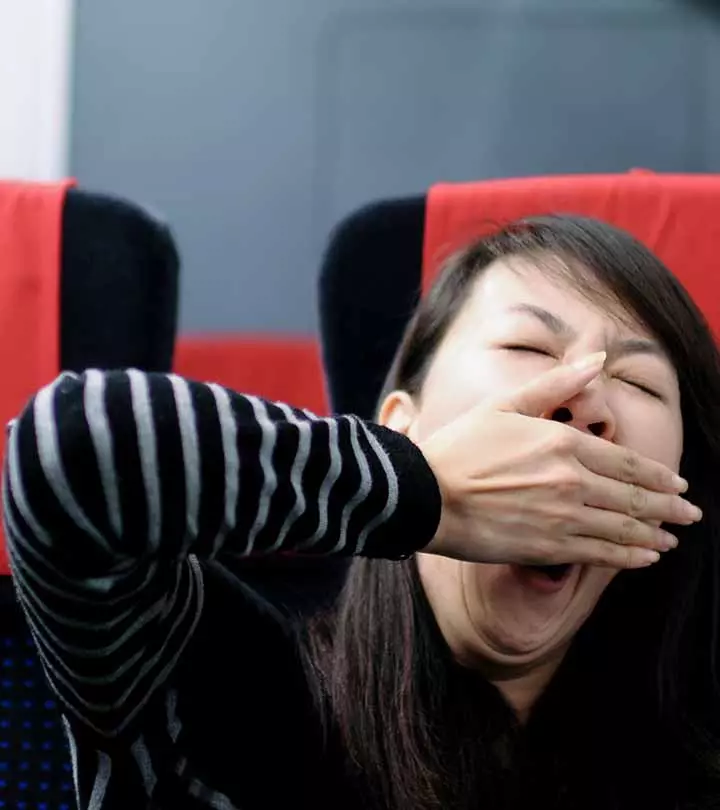
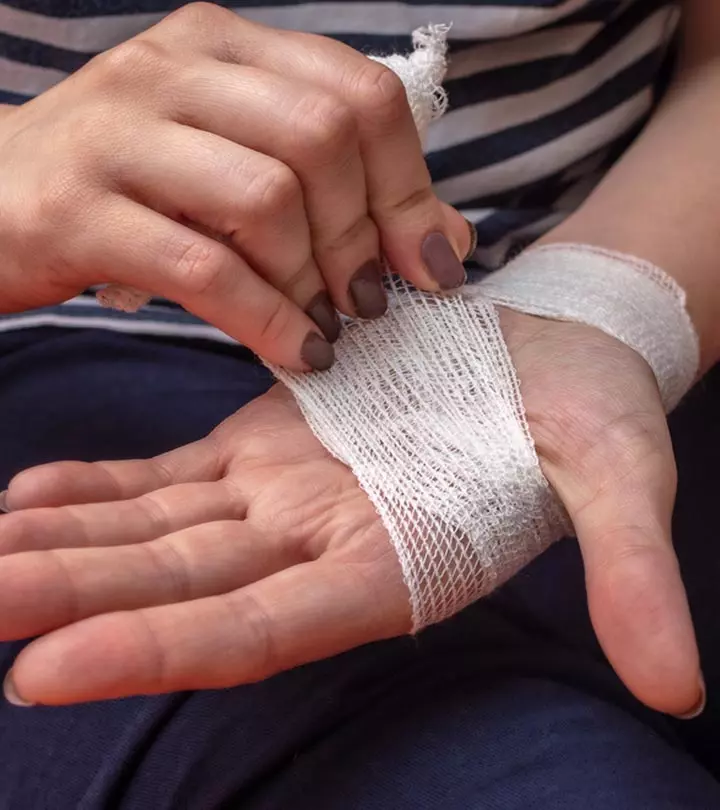

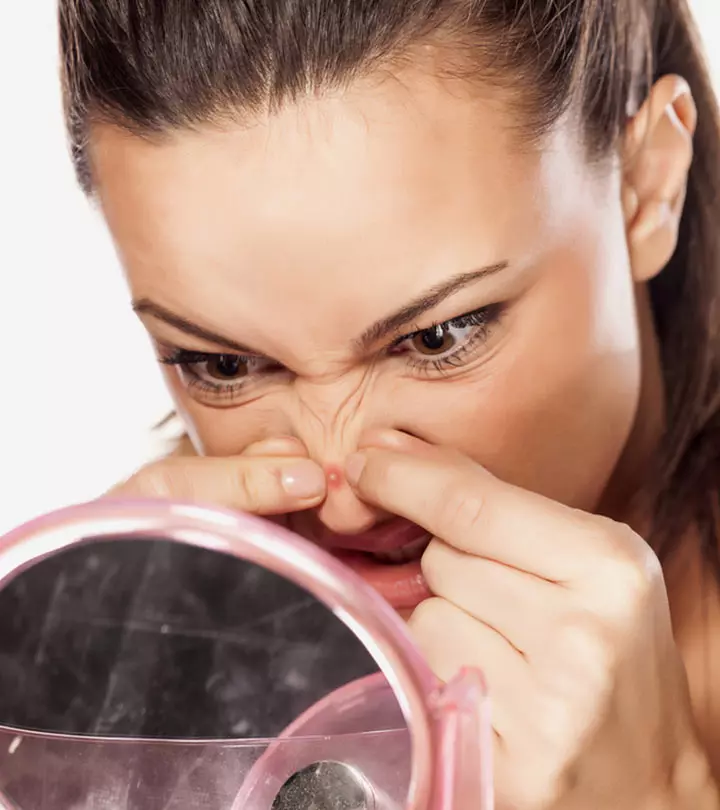
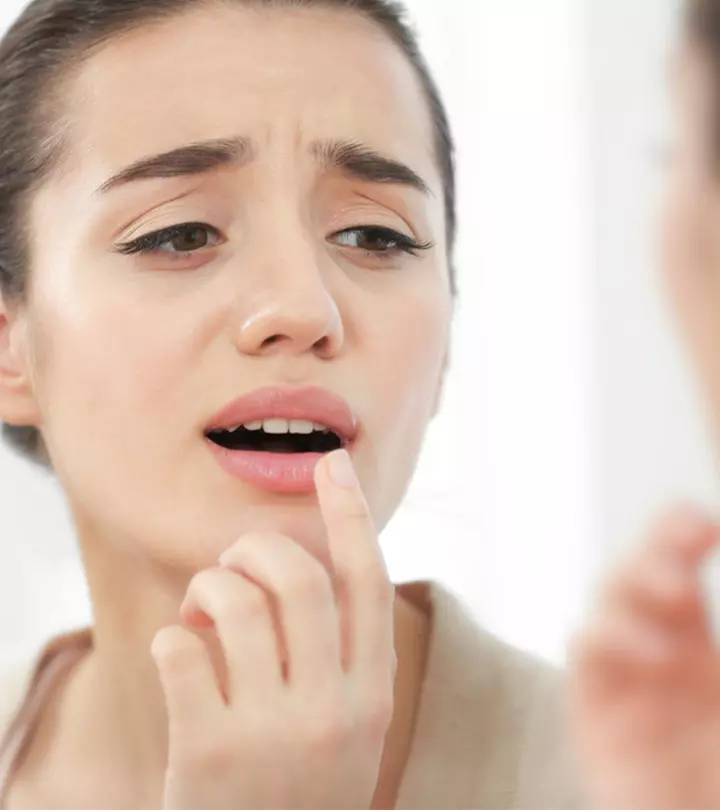


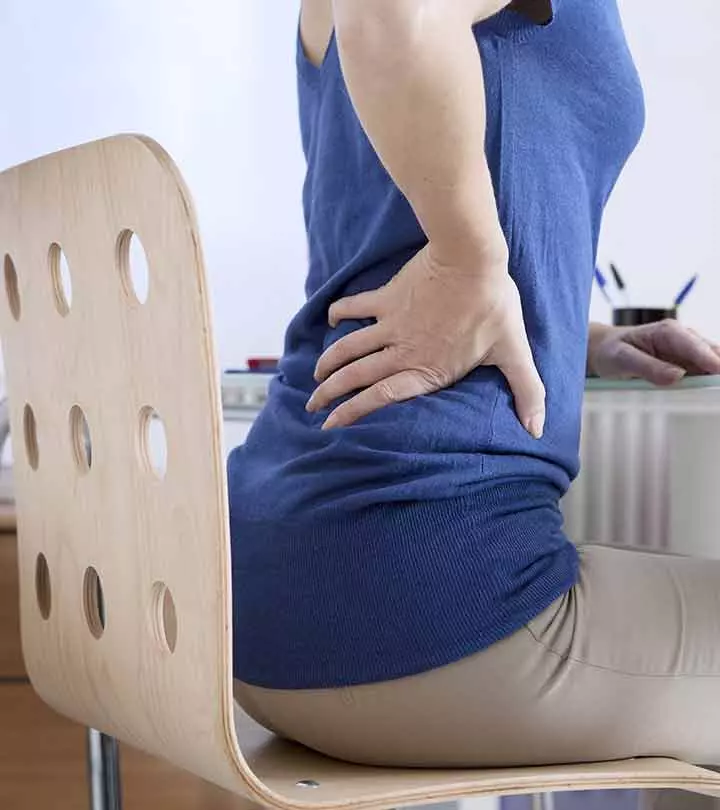


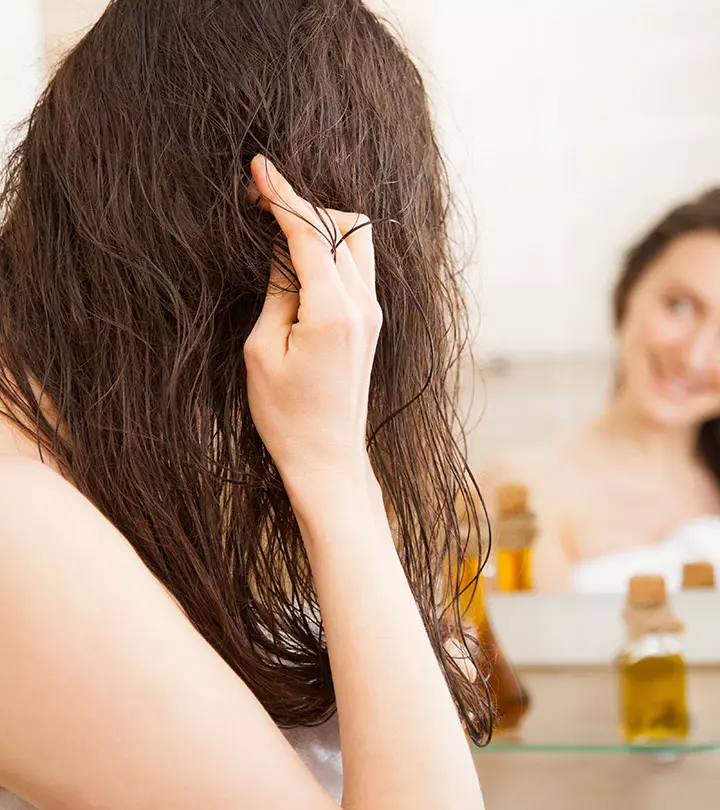
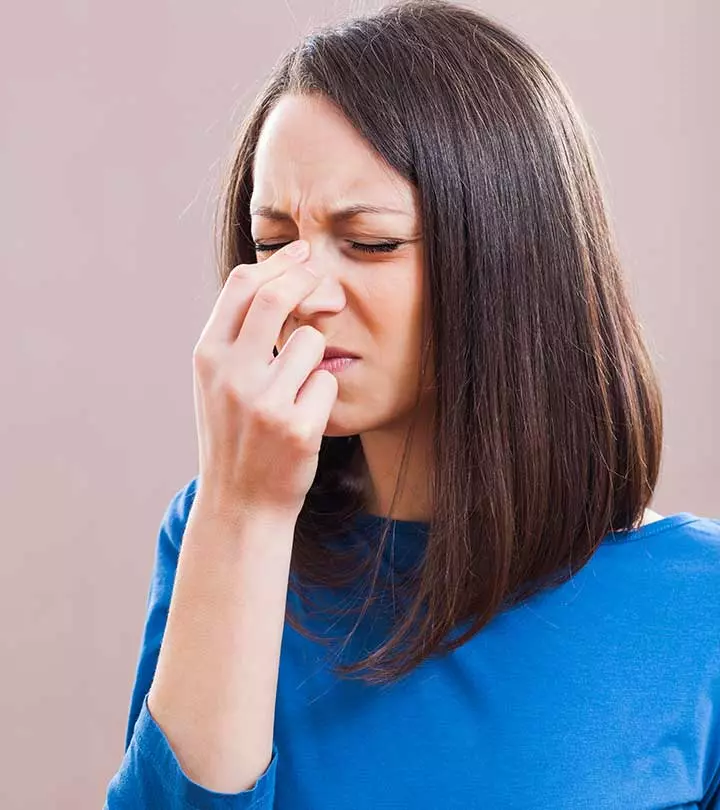
Community Experiences
Join the conversation and become a part of our empowering community! Share your stories, experiences, and insights to connect with other beauty, lifestyle, and health enthusiasts.